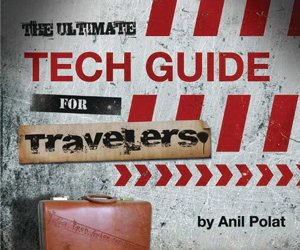
Traveling can be both exciting and challenging, especially when it comes to staying connected, capturing memories, and navigating unfamiliar places. Fortunately, advancements in technology have given rise to a plethora of gadgets that can significantly enhance the travel experience. In this blog post, we’ll explore 10 ingenious gadget hacks that every smart traveler should know. These hacks will not only make your journey more convenient but also help you make the most out of your travel gadgets.
1. Portable Power Banks: Your Lifesavers on the Go Running out of battery during your travels is a nightmare. Invest in a high-capacity portable power bank to keep your devices charged throughout the day. Opt for power banks with multiple USB ports to share the juice with fellow travelers.
2. Smartphone Photography: Lens Attachments and Stabilizers Turn your smartphone into a photography powerhouse with clip-on lens attachments. Wide-angle, macro, and fisheye lenses can add a new dimension to your travel photos. Additionally, consider using a smartphone stabilizer to capture smooth and professional-looking videos.
3. Noise-Canceling Headphones: Peace Amidst Chaos Long flights and noisy environments can be exhausting. Invest in noise-canceling headphones to enjoy your favorite music, movies, or podcasts without distractions. Some models even have a built-in translator, making communication in foreign countries a breeze.
4. Multi-USB Travel Adapters: Charge All Your Devices at Once Carrying multiple chargers for different devices can be cumbersome. A multi-USB travel adapter allows you to charge all your gadgets simultaneously, eliminating the hassle of finding multiple power outlets.
5. Digital Luggage Scale: Avoid Excess Baggage Fees Save yourself from unexpected fees by weighing your luggage before heading to the airport. Compact digital luggage scales are portable and easy to use, ensuring your bags meet the airline’s weight restrictions.
6. Offline Maps and Translation Apps: Navigate with Ease Stay on track even without an internet connection by downloading offline maps and translation apps. These tools can help you find your way and communicate effectively in foreign languages, making your travel experience smoother.
7. Smart Locks: Secure Your Belongings Keep your belongings safe and secure with smart locks. These compact and innovative gadgets allow you to lock your luggage, hostel locker, or even hotel room using your smartphone, providing peace of mind while you explore.
8. Waterproof Phone Cases: Protect Your Device Whether you’re relaxing on the beach or exploring waterfalls, a waterproof phone case is a must-have. Safeguard your smartphone from water damage and capture stunning underwater moments without worrying about your device getting ruined.
9. Portable Wi-Fi Hotspots: Stay Connected Anywhere Stay connected on the go with portable Wi-Fi hotspots. These devices provide a secure internet connection, allowing you to use maps, check emails, and upload photos without relying on public Wi-Fi networks, which may not always be safe.
10. E-Readers: Carry Your Library Everywhere For avid readers, carrying multiple books can be impractical. Invest in an e-reader to enjoy your favorite novels, travel guides, and magazines on a single device. E-readers are lightweight, compact, and offer long battery life, making them perfect companions for travelers.
Incorporating these gadget hacks into your travel routine can transform your journey into a seamless and enjoyable experience. Embrace the power of technology to capture memories, stay connected, and navigate unfamiliar places with confidence. By investing in these innovative gadgets, you can focus on immersing yourself in the wonders of the world without worrying about the challenges that often come with travel. Happy travels!
{ 0 comments }









